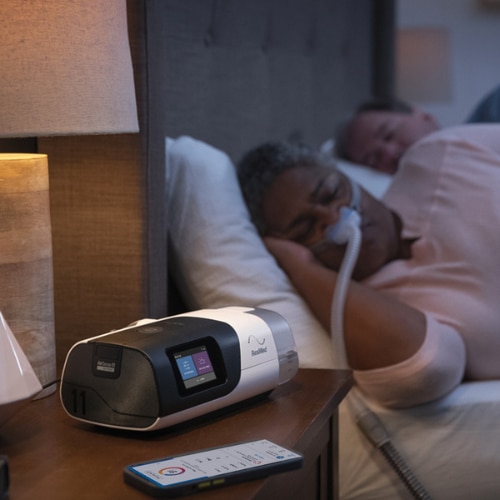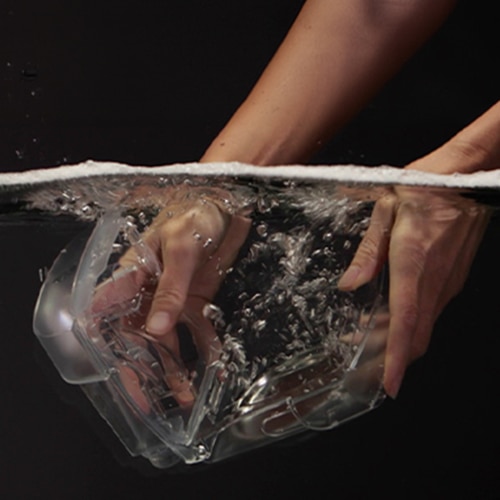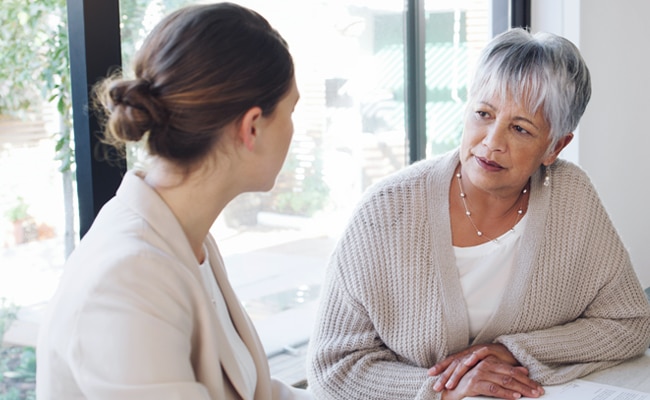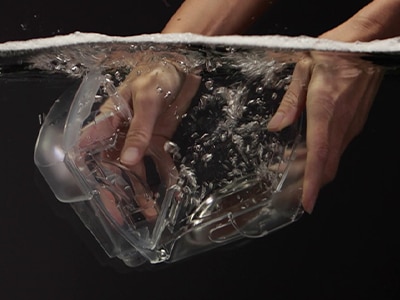Finding it hard to get used to your CPAP or bilevel therapy? You're not alone.
When starting CPAP (continuous positive airway pressure) or another PAP (positive airway pressure) therapy for the first time, or switching from a different device, some people adapt quickly, others can take a little longer. If you’re having issues, you don’t need to face them alone – we have plenty of suggestions that could help make the process easier.
Anchors coming soon
Still struggling after testing this 3-step approach?
Finding pressure too much when trying to fall asleep?
Some people find it hard to fall asleep while breathing in the full flow of pressurised air from their machine. If this sounds like you, you could try a device with a feature designed to gently ease you into each therapy session. It does this by starting with a low pressure that you can get used to as you nod off. Your device will then gradually increase the pressure to your prescribed level – by which time you should be fast alseep!
Having trouble breathing out against a strong air flow?
Similarly to the issue described above, some people find it difficult to breath out against the air pressure from their device – particularly if they have a condition such as xxx). In this case you may suit a device that has a feature that gently reduces the pressure when you exhale, to help make it easier for you to breathe out.
Your pressure needs change throughout the night?
Not everyone’s air pressure requirements stay the same as they sleep, so it can help with comfort if they use a PAP device that can cater to changes in breathing pattern. In fact, some devices have algorithms that can adjust the therapy pressure in response to your needs on an hourly, nightly or even seasonal basis – only increasing the pressure if you need it.
You’re not sure which type of mask you need?
Matching your mask to your sleep habits
Your mask is not fitting your nighttime routine?
If you’re a front or side-sleeper, tend to move around a lot in the night, or feel claustrophobic with your face covered, the type of mask you use can affect your comfort and therapy. That’s why we make different types of masks designed to suit different sleeping styles and bedtime habits – your doctor should be able to help you find the right one for your needs.

Adjusting the air’s humidity level
Dry, stuffy nose after using your device?
It’s possible you may experience side effects from breathing in dry, cold air from your device. These can include a dry throat and mouth or stuffy nose. A humidifier can help avoid this and make therapy more comfortable1 by adding moisture to the air you breath via a small heated water tub. You can also use heated tubing to warm the air and prevent moisture building up in the tube, which could then run towards your face. You can set the humidity level manually, or if you have a humidifier and heated tubing connected the Climate Control feature can adapt to conditions automatically.
Waiting until you’re nearly asleep to start device
Starting therapy automatically
Picture the scene: you’re settled and comfy in bed, with your CPAP mask on ready to drift off, and then realise you need to turn on your device… If you find this disruptive, you could try a device that switches itself on. This way, therapy starts when you put your mask on, so all you need to do is lie back and relax – this feature can also help acclimatise you therapy and get used to breathing with your mask on.

You’re not feeling motivated to start or stick to therapy?
Tracking your progress with an encouraging app
Using a PAP therapy app could give you a much-needed boost. For example our myAir app has a Goal Tracking feature designed to help you start therapy – and keep going – by heading for milestones: each time you meet one, you’ll be rewarded with an achievement badge. The aim is to encourage you to adopt good habits, such as using therapy for at least four hours per night. And that’s not all: the app dashboard has a usage goal progress bar and goal tracking calendar view, so you can check your progress, such as nights completed and badges earned.

Your device doesn’t seem to work as well as it did previously?
Keeping your equipment clean and effective
If your therapy started well but now feels like something’s changed, take a look at your cleaning regime (or lack of it!). Be honest – are you following the cleaning instructions that came with your device? As well as helping maintain a healthy environment and prevent potential bacteria build-up, keeping your equipment clean aids the performance of your PAP treatment, so it’s important to follow a regular cleaning schedule. And the cleaning process also gives you the chance to check whether any components are worn, damaged or otherwise in need of replacement, which again could affect therapy performance. If you’re sure your equipment is in tip-top condition and something’s still not right, speak to your doctor.

Getting used to treatments FAQs
Answer to come soon.
Answer to come soon.
Answer to come soon.
Answer to come soon.
Answer to come soon.
Answer to come soon.
Answer to come soon.
The good news is you can sleep in any position you like when on therapy – however, some masks are more suitable for people who move a lot during the night or sleep on their stomach than than others. Our Starting with the right CPAP mask page will guide you through the options available.
Yes. As described above, you can practise using your CPAP device and mask while you are awake. Some devices can also be paired with an app that allows you to test different pressures to help you acclimatise to them before using overnight.
Sleeping with your mouth open during PAP therapy isn’t ideal, as it can allow some of the pressurised air that you breathe in to escape before it reaches the lungs, making treatment less efficient. Moreover, your device might try to push more air out to keep to the prescribed pressure, which could make therapy less comfortable for you. Once you’ve started PAP therapy you are less likely to sleep with your mouth open as there should be less need for you to gasp for air during the night. However, if you suspect you’re still sleeping with your mouth open while on therapy, please contact your healthcare professional who can suggest options to help.
Don’t worry – there are masks that have been specially designed to fit the needs of active sleepers like you. Consult our page about masks for details.
Answer coming soon.
As explained above, there are motivational apps you can use to help you get used to therapy and solve any teething troubles by yourself. These apps can also help you stick to therapy once you get into your PAP routine. Some people also find comfort accessories such as CPAP pillows can also help improve their therapy experience.
If your equipment is noisy, it’s possible that some parts aren’t connected properly. This can result in air leaking out, causing a sound. The first important step is to work out where the noise/leak is coming from: the device itself, heated humidifier, CPAP tubing or mask. Then check everything is connected properly, run the device for a few minutes and listen for a change in noise. If it persists, refer to your mask and/or device user guide for fitting and setup instructions.
Still can’t get used to CPAP?

Minor setbacks aside, if you have a good mask seal and use your PAP therapy equipment consistently, you should start to feel benefits in your quality of life and overall health. However, please contact your doctor or care provider for a check-up if:
- your sleep apnoea symptoms persist
- you feel worse than you did when you started therapy
- you’re finding it hard to breathe out against the air pressure
- you feel like treatment just isn’t working
Tools and tips to help you stay on therapy

Track your CPAP therapy with myAir
Track your sleep therapy and get personalised advice and assistance on your PAP sleep therapy with the myAir monitoring and coaching app.

Travel confidently with your CPAP
Read our CPAP travel tips if you’re traveling with sleep apnoea. Learn how to travel safely with your CPAP device and enjoy good sleep away from home.

Cleaning your CPAP equipment
Want to ensure your sleep apnoea therapy is as effective as possible? Keeping your CPAP equipment clean will help, so here’s our guide to get you started!
Please refer to the user guides for relevant information related to any contraindications, warnings and precautions to be considered before and during use of the products.
- Patil SP, Ayappa IA, Caples SM, et al. Treatment of Adult Obstructive Sleep Apnea With Positive Airway Pressure: An American Academy of Sleep Medicine Systematic Review, Meta-Analysis, and GRADE Assessment. JCSM 2019;15(2):301-34
Content last updated: 06/2024.